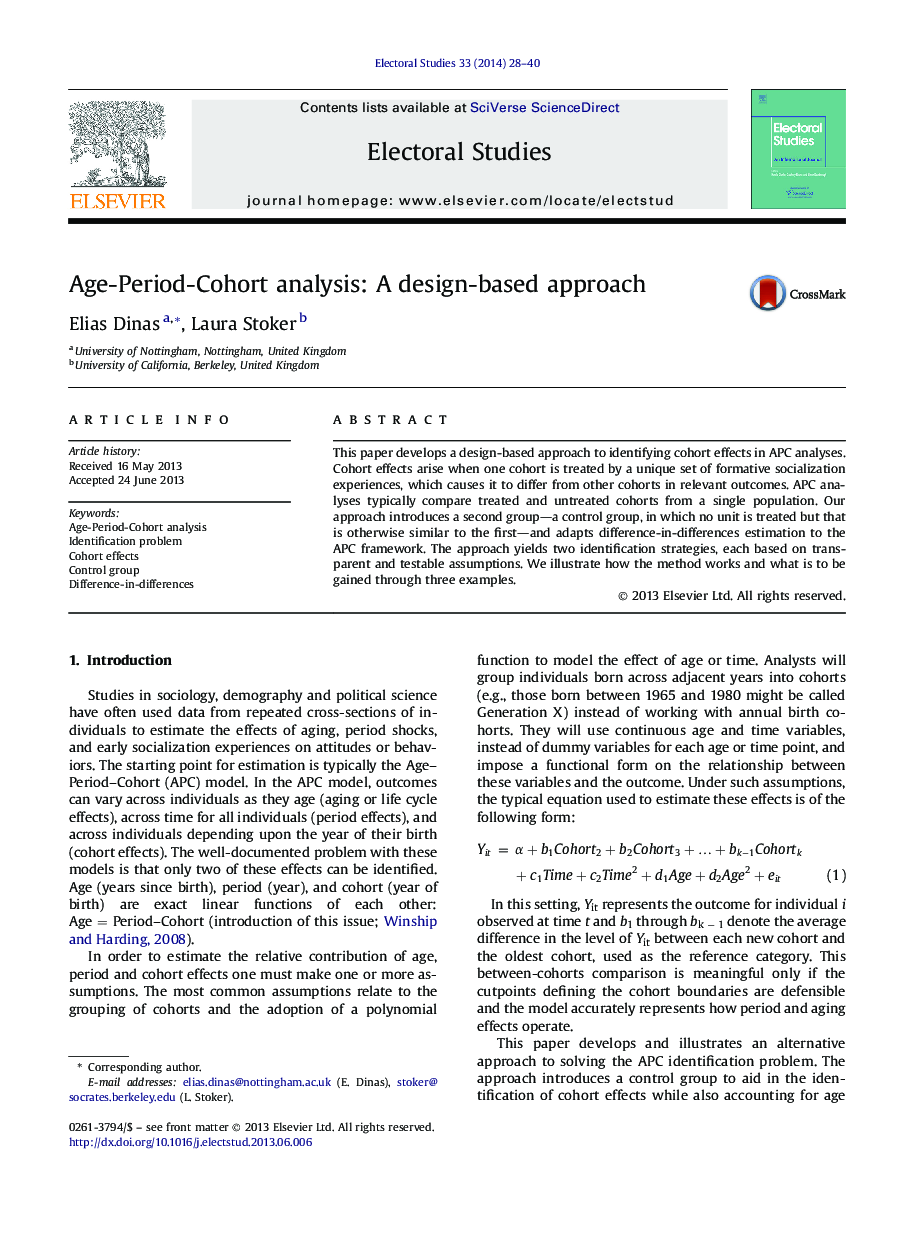| Article ID | Journal | Published Year | Pages | File Type |
|---|---|---|---|---|
| 1051889 | Electoral Studies | 2014 | 13 Pages |
•A design-based solution to the identification problem in Age–Period–Cohort Analysis.•Rests on the inclusion of a control group to identify cohort effects.•Adapts difference-in-difference estimation to the APC framework.•Identified by assuming either parallel age or parallel period effects.•Allows for analysis of birth-year cohorts and fully-factored age and period effects.
This paper develops a design-based approach to identifying cohort effects in APC analyses. Cohort effects arise when one cohort is treated by a unique set of formative socialization experiences, which causes it to differ from other cohorts in relevant outcomes. APC analyses typically compare treated and untreated cohorts from a single population. Our approach introduces a second group—a control group, in which no unit is treated but that is otherwise similar to the first—and adapts difference-in-differences estimation to the APC framework. The approach yields two identification strategies, each based on transparent and testable assumptions. We illustrate how the method works and what is to be gained through three examples.
